Lapierre Spicy Team Edition - Review
Lapierre first gave birth to the Spicy back in 2007. Since then, with feedback from DH legend Nicolas Vouilloz, it has become recognized as one of the go-to bikes for exploring off the beaten track in big mountains, as well as smashing down enduro race tracks around the world, something Nico isn't too shabby at doing. The bike has evolved during that timeframe, with the 150mm travel Spicy Team Edition tested here, being the most advanced and also the most expensive example of the breed. Retailing for $8,000 USD and sporting electronically aided suspension, this is the French company's no-holds-barred attempt at creating the ultimate mid-travel bike, and it is actually close to what Nico actually uses during race weekends, sans a few rather special near one-off components that only a handful of the world's fastest racers can get their hands on. Don't want to shell out that kind of money? Lapierre also offers their Spicy 527, available in both E:i and a non E:i versions, for $5300 and $4500 USD; and the Spicy 327 (available only in Europe) for $2599 Euro.
Like previous editions of the Spicy platform, it features a 160-millimeter fork, but from there the bike has undergone a host of changes. Most visibly, the wheels have been bumped up to 27.5-inches to take advantage of the mid-size wheel's ability to carry speed on rough ground - critical for a bike that was designed to be a race bike first, play bike second. Additionally, the cockpit gets more room, with 15-millimeters added to the top tube length of the small and medium sized frames, and 10 millimeters to the large. The remaining changes are more subtle, with the biggest being the reduction in rear-wheel travel from 160mm to 150mm. As in previous years, this frame is exactly the same as its little brother, the Lapierre Zesty - the Zesty, however, receives less travel up front and components more suited for less demanding trail riding than smashing down mountainsides at warp speed.
Frame Details
The Spicy has a clean look to it, thanks in large part to the internally routed cables, even if its frame doesn't having the flowing lines of some other designs out there. The slack front end gives it a ready-for-business appearance, as does the sturdy looking rear end, and many motor racing fans will recognize the black, blue, and red accents as being close to those historic Martini Racing colours - a neat touch, even if it wasn't on purpose. For those who cringe at the thought of having to swap an internally routed cable, Lapierre has used teflon guides that should make it a snap, while keeping the lines from rattling inside the frame, and there is also an option to route the rear brake line externally if you don't want to deal with bleeding it after installation. As with the majority of carbon frames on the market that have been designed to rip down serious terrain, a burly looking frame guard can be found on the underside of the down tube that protects against rock strikes.
Both the front triangle and the seat stays are composed of different blends of carbon fiber in order to maximize strength, while the bike's chain stays are aluminum in order to maximize durability in an area that sees a lot of abuse. The front triangle is manufactured as a true monocoque, meaning that it's molded in a single step, versus being comprised of different carbon sections that are then glued together in a second operation. This not only plays a part in the claimed 300-gram weight savings, compared to the alloy frame, but it is also said to create a stiffer and more reliable product. Lapierre certainly isn't the only brand that takes a monocoque approach to frame construction, however, and the Spicy is made using techniques that have been proven over many years.
Geometry and Suspension
Despite the wheel size change, geometry on the 2014 Spicy remains surprisingly close to its 26-inch predecessor. There's the longer top tube we previously mentioned, but the head angle has been slackened by a half degree as well. However, the seat tube angle and chainstay length remain the same as the 2013 model, although doing that meant eliminating the seatstay brace in favour of joining the stays at the upper rocker link. Another change can be found at the bottom bracket, with it dropped by 18 millimeters order to compensate for the larger diameter wheels, and should noticeably boost the bike's cornering performance.
On the suspension side of the Spicy, we have two things going on: first, Lapierre’s Optimized Suspension Technology plus (OST+) and their E:i system. The OST+ suspension design utilizes a Horst Link rear dropout pivot in order to remain active under braking, but Lapierre’s suspension engineers went to work to combat pedal bob by using chain tension to keep the back end from moving excessively when the rider is on the gas. This is always a balancing act, with designers having to decide exactly how much suspension activity they want to trade for more efficient pedalling. For 2014, this linkage was tweaked to offer more grip when climbing, a larger sag range to better customize the ride, a more linear compression curve, and greater stability when pedalling hard. In other words, Lapierre is saying that it's better in every regard, which is kind of what you'd expect them to say, isn't it?
Secondly, we have E:i (electronic intelligence). It’s an electronically controlled system, proprietary to Lapierre and a two sister companies in Europe, that was created in collaboration with RockShox. In a nutshell, a computer handles inputs from two accelerometers - one on the stem, one on the fork leg - and a cadence sensor in the bottom bracket shell that all tell the shock how it should be performing: locked out when smooth, to wide open in the big stuff, and everything in between. For a more complete breakdown of the nuts and bolts of this system, see Pinkbike's article on this technology. The E:i system is obviously more complicated than a standard setup, but it is quite simple to operate: the arrows on the remote change the shock mode from "Auto" to "Locked", to "Medium", or "Open"; and the center button changes the display to show information like cadence, speed, time in motion, etc. In the auto settings, the computer controls servo operated floodgates that can shift the shock from wide open to completely closed and anywhere in between in one tenth of a second. A rechargeable battery mounted near the bottom of the down tube powers the system for up to 25 hours of continuous use.
Suspension Setup and Bike Fit
Despite the high-tech nature of the E:i system, suspension setup is per the norm: start by setting sag on the shock and fork, tweaking the rebound to your liking, and then adjusting from there as needed. However, the bike's E:i system should allow you to not be forced to compromise the its descending capabilities with a firmer set-up for non technical trail riding - in theory, it will add platform as needed, enabling one to err on the side of plush rather than punishing. The one point to note during setup is that it must be done with the suspension set to full open, just as you would do with any bike that offers different levels of compression damping.
The 15 millimeters of extra top tube length on the Team, compared to last year’s Spicy, is a welcome change. The cockpit of the 2013 bike was just a bit too cramped. By comparison, the medium sized frame's 605-millimeter top tube paired with a 55-millimeter stem gave us a nice, comfortable feel: not too long for our tastes, but not too short, either. And, despite the larger wheels, there was plenty of stand-over room too. In short, the fit felt just right. We do need to mention one flaw on our test bike, though: we hijacked a pre-production model that featured more man-sized seatstays than the production model (15-millimeters wider, to be precise). As a result, we found ourselves scuffing our heels frequently for the first few rides. After that, like when riding a bike with a low bottom bracket and learning when to avoid pedal strikes on trail obstacles, we modified our pedal stroke to make this a non-issue. However, some riders may find even the tapered stays of the production bike to be distracting when pedalling, particularly with DH style shoes and platform pedals.
Climbing
Anyone expecting the 150-millimeter-travel Spicy Team to climb like a bag of rocks will be pleasantly surprised. With the E:i turned off, the bike climbed as one would expect a properly set up longer-travel machine to ascend - with good traction and acceptable pedal feedback, even big out-of-the-saddle efforts don't penalize the rider with too much monkey motion. That said, it is certainly not a rocket ship when fighting gravity. But, with the E:i engaged, the bike climbed like a billy goat: every ounce of effort went into moving the bike up the trail. On quicker paced trail climbs, the rear suspension still engaged on obstacles to offer extra grip when needed. When slowed to a crawl in steeper, technical terrain, however, the E:i system tended to keep the rear locked out, resulting in lost traction in moments when it counted the most. Switching the E:i off in such situations allowed the OST+ rear suspension to grab that brief moment of traction required for getting up and over all but the slickest obstacles. Turning the E:i setup on and off during a climb isn't ideal, and we'd recommend that anyone who owns the bike spend time playing with the different levels of damping control that is available in the system in order to find one that works best for their terrain.
Downhill and Technical Handling
No bones about it; the Lapierre Spicy Team is a light weight, but it tracks like a heavy-duty trail bike with DH balls. The combination of rock solid chassis, a DH inspired cockpit, mid-sized wheels, and top-shelf suspension components make it amazingly capable. It's incredibly stable at speed, yet also incredibly agile when needed; direction changes are effortless… you can flick this bike at will, regardless of speed. And while it has ten millimeters less travel than last year's Spicy, the suspension pretty much gobbled up anything in its path - large, square-edged hits included. That suspension, combined with the laterally stiff frame and SRAM's Rail 50 wheels, meant that it held virtually any line we dropped into. But even when adrift in those “Oh shit, h-a-n-g ON!” moments, the combination of slightly larger wheels, point and shoot stiffness, and don’t-have-to-think-about-it suspension got us through every time.
The E:i System
The E:i system was an eye opener. We admit that some of us had disliked the idea of E:i before testing it - after all, how can some algorithm tell the suspension what the rider really wants? The whole idea seemed to be disconnecting the rider from the bike, and it just seemed like something that an already good machine didn't need. But with E:i everything was near seamless: no longer were we reaching for a compression lever on the shock when approaching climbs, only to have to fumble for the "open" setting when the fun started. Instead, it was hit the gas for the climb and the bike took off like a monkey. Get into a bit of trail chatter and the suspension would smooth it out. Drop into the kind of pucker found on the ‘Shore or the high speed chunder of big mountain descending and it was taking everything you threw it at and asking for more, allowing us to focus on one thing: going as fast as possible. Rather than disconnecting us from the bike, E:i did the complete opposite by allowing us to forget about everything but the ride.
We tried the E:i system in all of it’s automatic settings, from the nearly open feel of 'Auto 1' to the XC racing-firm Auto 5. Within a short time, we settled on utilizing either the 'Auto 2' or 'Auto 3' settings. Auto 1 - even with the OST+ set correctly - offered a bit too much suspension bob when standing to hit the gas coming out corners, while Auto 4 and 5 were just too firm for our liking. In slower-paced technical, or pedal-intensive terrain we’d hear the servo-motor on the shock click and whir as we pedaled, setting the right amount of supple compliancy when getting into roots and rocks for us to carry speed, yet also setting just enough platform to remain easily flickable. Trying the same lines with E:i in it’s open setting gave us just as much traction, but when forced to pedal out of the saddle, we found ourselves going into the bike's travel too much whenever we stabbed the cranks for more speed. We also had to put noticeably more effort into flicking the bike over obstacles. Staying seated in situations like that did offer better pedalling, but that also robbed us of the ability to power over most of the rough stuff. In short, the E:i system was consistently more efficient than leaving the suspension in it’s open setting. That’s not to say the bike’s suspension performed poorly when left open; it just wasn't as efficient under power, particularly when standing to hammer on the pedals, than when the E:i was engaged.
Throughout the duration of the review we were only able to "fool" the robot bike in two scenarios. This happened when braking late on the same high-speed left-hand berm while in the Auto 2 setting; E:i appeared to mistake the compression of the fork for rider induced low speed compression and kept the shock locked out even though we weren't pedalling, producing a rough, brake jack-like feeling completely at odds with the bike’s normal performance. However, that same corner offered no problems for either the Auto 1 or Auto 3 settings, nor were we able to duplicate that brake jack elsewhere in the Auto 2 setting. When queried, Lapierre pointed out that our test bike was fitted with an earlier production version of the E:i software that did see some revisions that might remedy this foible, although we didn't get our hands on the updated version to confirm this.
E:i Durability
So how durable is the E:i system? After all, it’s a pretty penny on top of what’s already an expensive bike, and the display appears to be awfully vulnerable perched atop the stem. Plus, if it’s going to fail after a month or six, why bother with it? Well… the display atop the stem is just that: a display. Once the E:i is set up, one can remove the display and E:i will continue to function. Only a severed cable or loss of power will cause the system to fail, in which case, the suspension will simply revert to full open. As to long term abuse; we've had just four solid months on the bike, but we were far from gentle with it - it was used in pissing rain, desert heat, below freezing temps with sleet, and it never failed. In fact, the E:I system worked so well that we went from doubting that electric assisted suspension should exist on bikes, it to not wanting to give it (or the bike) back. The caveat here is that anyone purchasing their own Spicy Team is going to keep the bike for a lot longer than four months, but we do have to say that we have confidence in the system's long-term reliability.
Component Check
• SRAM Rail 50 Wheels – The Rail 50s were rock solid. We beat the snot out of them, and while they did go out of true a bit during break in, they developed no dents, dings, or flat spots. Once re-trued, they held up perfectly for the remainder of the test.
• RockShox Monarch RT3 Shock – We were somewhat surprised to see an in-line shock on this bike, particularly when it’s stated purpose is Enduro racing. However, on long descents, we never experienced suspension fade from overheated oil or cavitation in the shock. And it’s worth noting that for most of his EWS campaign, Nico ran this same rear shock… the exception being on a couple of the more DH oriented EWS races where he ran a Monarch Plus RC3.
• Easton Cockpit – Bar-width and stem-length are personal choices, and while the 750-millimeter-wide Easton Havoc carbon bars will work well for a lot of riders, there will be riders who want a wider bar?.
• RockShox Reverb Stealth seatpost – We are definitely a fan of the Reverb, particularly the Stealth version. However, the seals on this one began to fail after only two months of use, requiring a complete rebuild. Not good.
• XX1 Drivetrain – The bike's 30-tooth chainring was spot on. Even though the chain was in good shape, the rear pulleys showed a surprising amount of wear near the end of the test and had to be replaced. Otherwise, zero complaints.
Pinkbike's take:
 | The Spicy Team is an out-of-the-box shred machine, and although that might be an expected conclusion given its high-end build and racing pedigree, it's the bike's E:i suspension that transforms it from an already formidable rig to a mid-travel trail weapon. And while it is close to Nico's personal EWS race bike, the Spicy Team is also as at home ripping around in the alpine as it is chasing down seconds between the tapes. Pro-level performance most definitely comes at a cost, but as mentioned earlier, there are more economical alloy models available that are not far off the Team's performance. Those who are fortunate to be able to shoulder the Spicy Team's MSRP, however, will be rewarded with a point and shoot descender, designed by the man who wrote the book - that can also climb and accelerate like an XC machine - all without touching a lever. How many other bikes can do that?. - RC |
Lapierre
Author Info:
Must Read This Week
Sign Up for the Pinkbike Newsletter - All the Biggest, Most Interesting Stories in your Inbox
PB Newsletter Signup
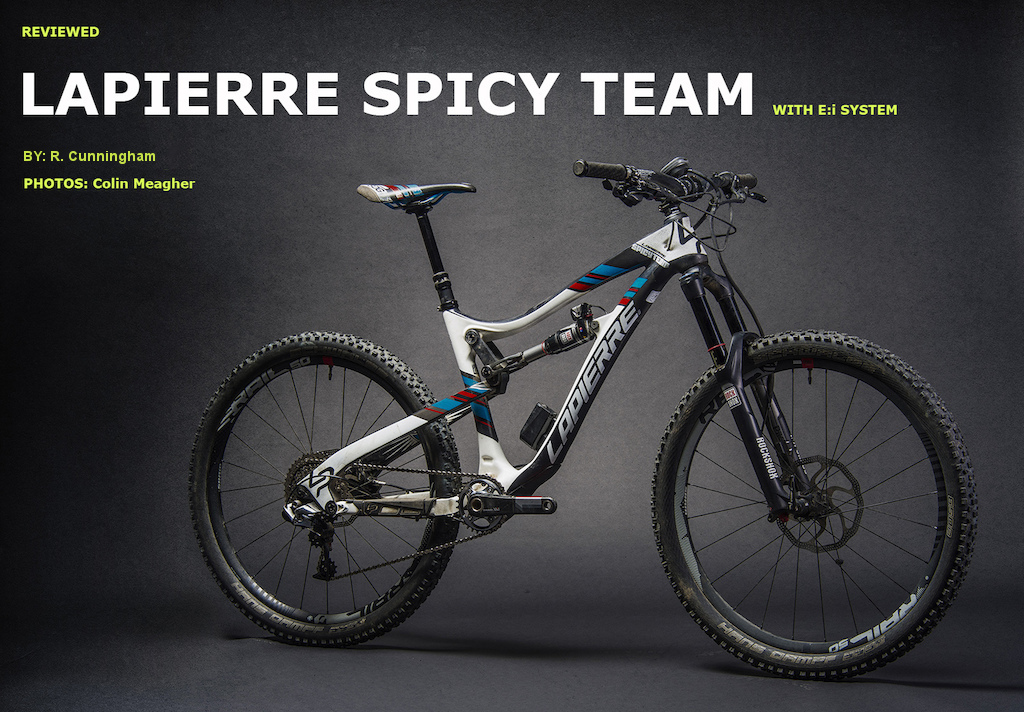


 Cable routing runs inside of the frame, with an option to zip-tie the rear brake line to the outside if you wish (top). A sturdy guard on the lower section of the down tube should ward off damage from wayward rocks
Cable routing runs inside of the frame, with an option to zip-tie the rear brake line to the outside if you wish (top). A sturdy guard on the lower section of the down tube should ward off damage from wayward rocks

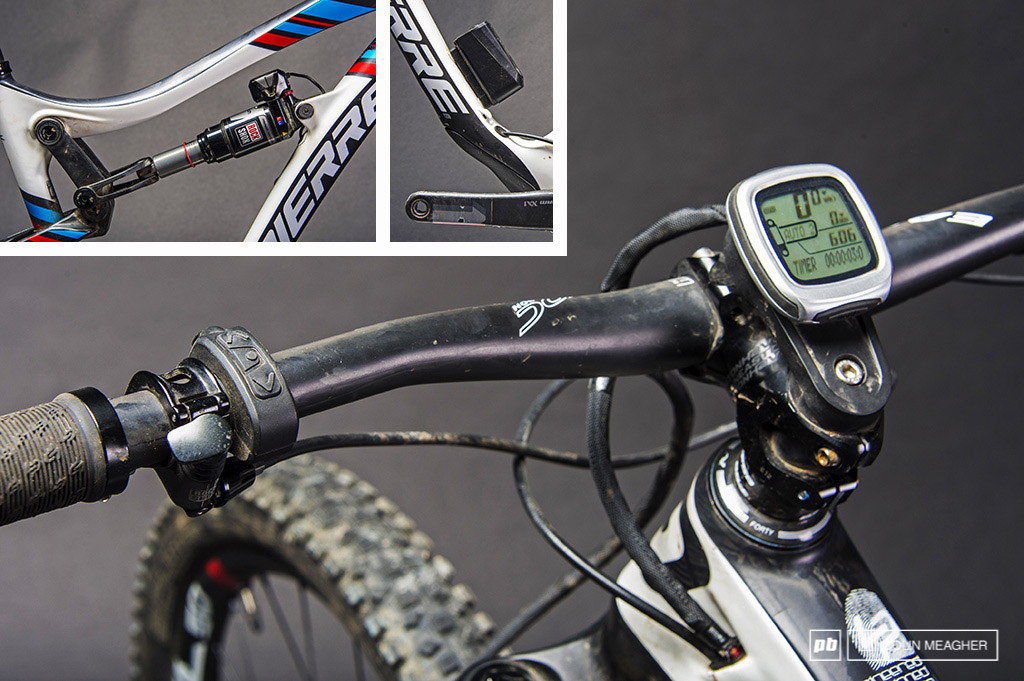
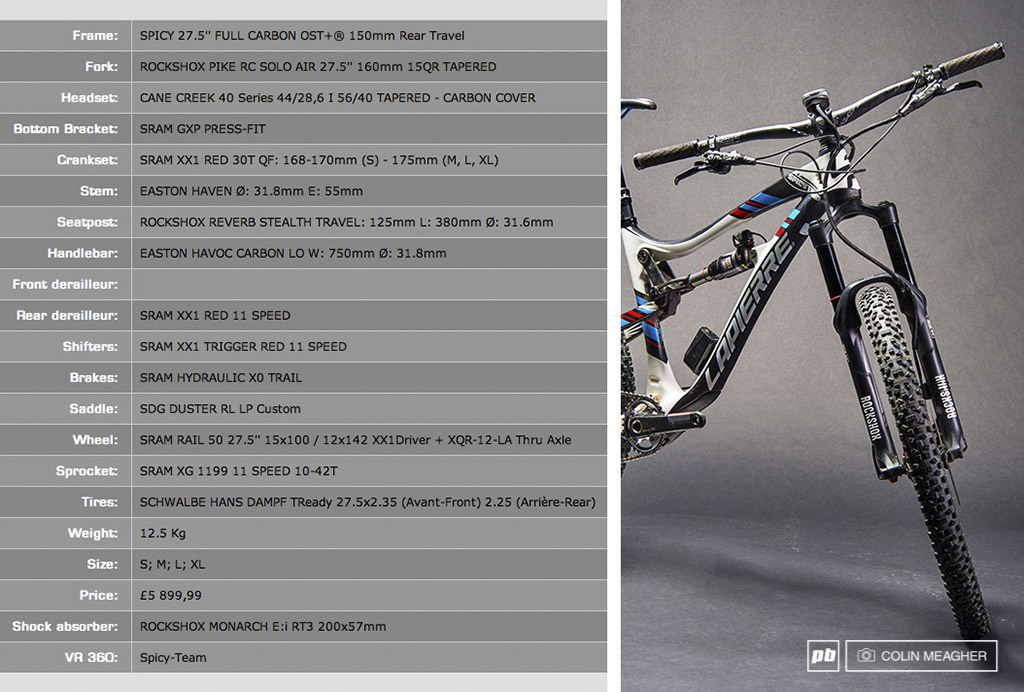
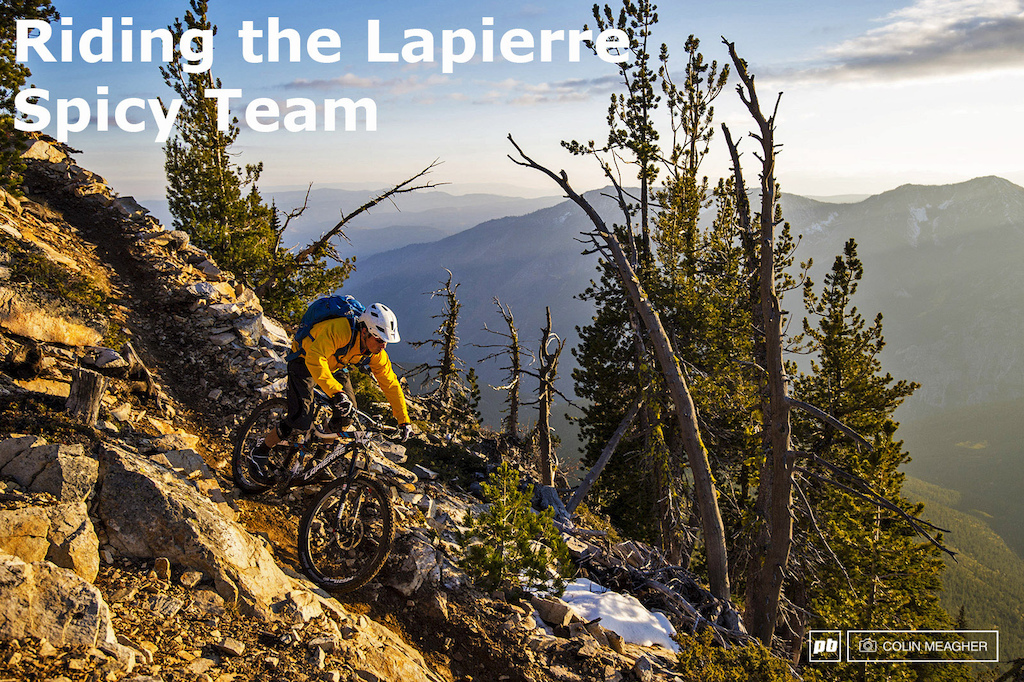

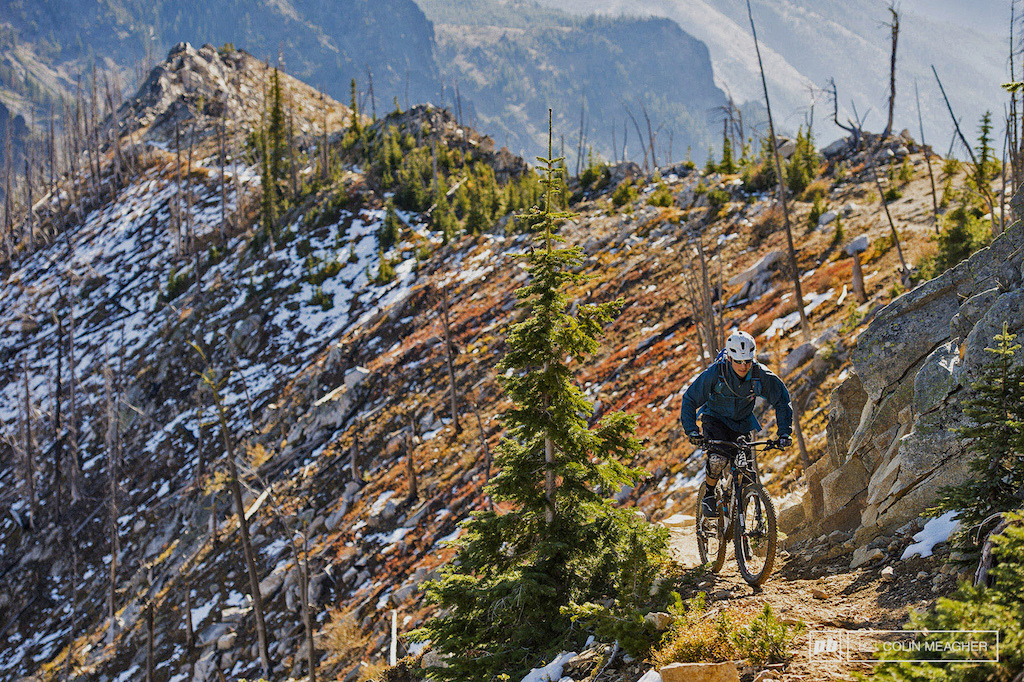





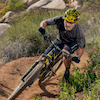
 Member since Mar 23, 2011
Member since Mar 23, 2011
Just as the bike marketing departments had me believing carbon is as strong or stronger than aluminium.
At the same time ripcityBlazer, the rumour has it that it is actualy aluminium alloys that are the most potent for long term failure, comparing to steel and carbon. The same rumour has it that the reason that most companies btch on carbon stays is high cost of manufacture at minimal weight savings approx 150-200g at best depending on the suspension system. Here they just made the lower stays so you save probably 50g or so. Forms used for making stays are double as expensive as the one for the front triangle. Then you need to put many elements together takes more time... it is messy with small elements.
Anyways, Giant alu frames are super light, when ReignX weighs 2.6kg, then why go carbon?! Aluminium rims also got lighter, my LB weigh 380g while equally wide Syntace weigh 430g!
Stiffness is the amount of strain (extension/original length) for a given stress (force/area). Carbon fibres are incredibly stiff under tension, and the way that tubes can be manipulated and moulded, and how different lay up patterns of fibres effect characteristics, opens up all kinds of possibilities for designing in flex or stiffness into the tubing (or not tubes at all - Ibis Mojo for example). However, carbon will fail suddenly and catastrophically once you pass its elastic limit (the stress at which it no longer returns to its original length). Aluminium is also stiff, although more limited in the ways in which you can manipulate the tubing, and will experience more plastic deformation before it fails completely (i.e, it will bend or dent before it fractures).
Toughness (or durability) is how much energy a material can absorb, so would be the total area under a stress/strain graph. Aluminium, being a metal, and hence exhibiting ductile characteristics, is much better than carbon fibre in this respect. If you scratch or dent alu, the planes of atoms in the metal can slip against each other, which effectively dissipates the force among the atoms, and stops helps to limit crack propagation. Carbon fibre, because it is so stiff, and because the fibres exist as partially crystalline structures, cannot do this, as each atom is bonded to specific others, rather than the delocalised bonding in metals This means that it you damage one bit of the fibre through a scratch or something, the force is concentrated at the tip of the damage, which then passes through the material quickly and without much more force - carbon fibres fail through crack propagation. So in context, carbon fibre is great for areas that are unlikely to get impacted by hard objects, like bars, or a seatpost, or most of the front triangle (ignoring the bb and lower down tube), whereas aluminium can be much more practical for use in areas that are likely to get hit by things like rocks, or a flapping chain - chainstays.
And lastly, carbon fibre is expensive to manufacture (well). Moulds and construction methods take a long time to get right, which is why almost all initial frame prototypes will be in aluminium. If you want to change the pivot placement by 1mm on a prototype, on a carbon frame you've got to re-make some bloody expensive moulds; in alu you can just re position a jig, maybe get a different tube drawn, and get welding.
That should be enough physics revision for me today I reckon!
It's been like 5 years since carbon has been widely introduced to MTB, hello... I just think it is not worth the money, this is where it ends. Concerns about it's ability to remain rideable (evading scientific term nazis) after a crash are silly.
That test they did at Santa Cruz was impressive, although you didn't see them putting frames back into the test machine after hitting them on the wall, that's where the damage is done when riding. Typically a down tube will have some layers of twill weave, low modulus carbon over the top of the high mod UD stuff, too help absorb the energy of impacts (like whacking frames on concrete blocks).
I was just talking of the pros and cons of the raw materials though, it's what you so with them that counts. A well made aluminium frame will be far better to ride than an awful carbon frame...
It's either $ or Euro, make up your mind
P.S Sweet ride
But it doesn't have C.O.C.K. and B.A.L.L.S. technology like Transition bikes have.
www.pinkbike.com/photo/8341172
Too expensive.
I have a different bike and like it so what's the point of this.
I don't like unnecessary technology (coming from people riding bikes with technology that they already own, thinking bikes have always been like that)
It makes riding too easy (just like suspension, knobby tires, disc brakes, lightweight materials etc.)
I had an older bike and broke it after the warranty period was up, and they wouldn't replace it (WTF?)
The customer service was terrible, especially since the distribution dept has been in "transition" for over a year now.
I've cracked two of the Carbon rear triangles and they would not warranty it nor help find a suitable replacement even though I provided proof of purchase and was within warranty period.
It took over 6 weeks to find the parts I needed, then another 8 weeks on backorder to receive them.
I will never own an extravagent/exotic bike like this again..
Terrible Customer service, extremely limited brand accessibility and overall WAAAY too complicated for an average enthusiast to maintain and rebuild.
I have had two Lapierre's over the years and both have cracked. We very rarely deal in them now either as it's not worth the risk (used models).
Maybe this is the year they have stopped making the frames from chocolate and they will last.
Time will tell...
You could run a BOS Kirk, but it would void the warranty as you'd need to shorten the piggyback by around 25mm if my memory serves me right. It might be possible to do that on other shocks without altering performance, I don't know. Some might still fit.
One note regarding the Reverb plunger: you can still run it under the bar on the left *with* front shifter. I have SRAM shifters and SLX brakes, and I connected the brake and shifter perches with a ProblemSolvers MisMatch adapter. It freed up room to run the Reverb on the left.
27,5" x 2,54 / 2 = 34,93cm
+ 4,5cm tire profile = 39,43cm
- 0,8cm BB drop = 38,63cm
= 15,2"???
Like Skeeter from South Park says, "If you don't like it, you can get out!"
Say what you like about Lapierre, they ain't no fools.
i'm not seeing your logic, electronics are incredibly reliable these days.
Pinkbike poll ?